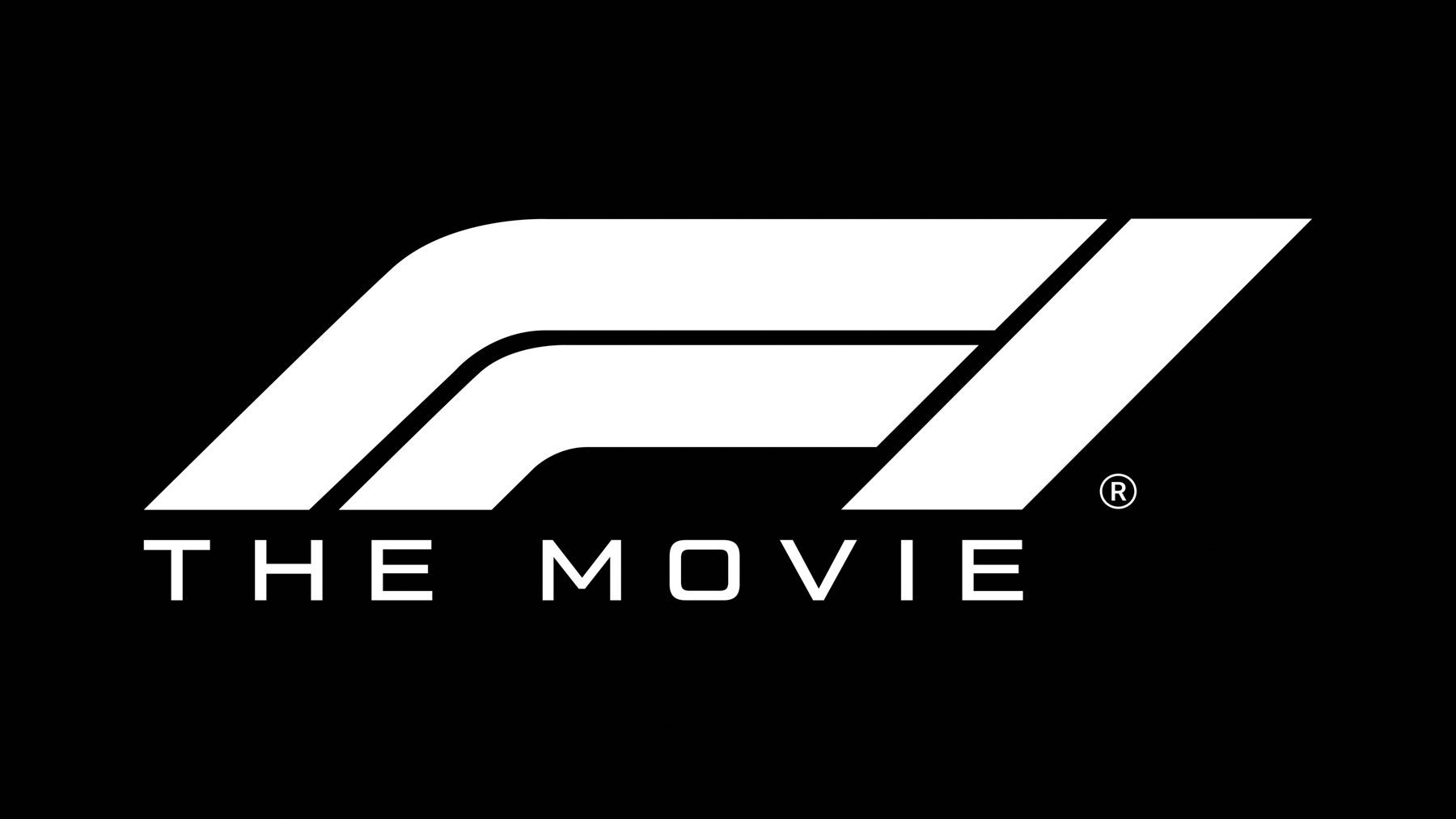
Review of “F1® THE MOVIE”
NOTE: This review contains some minor spoilers.
I am a life-long fan of motorsports in general and F1 auto racing in particular. I competed for decades at the amateur level (mostly autocross and some rallying). As a member of the Press, I’ve covered various professional and amateur auto racing series, including several F1 races (see “AutoMatters & More” #261r3 — my November 2012 review of the first Formula 1 race at the Circuit of the Americas, complete with my race photos, here: https://automatters.net/formula-1-returns-to-the-united-states/).
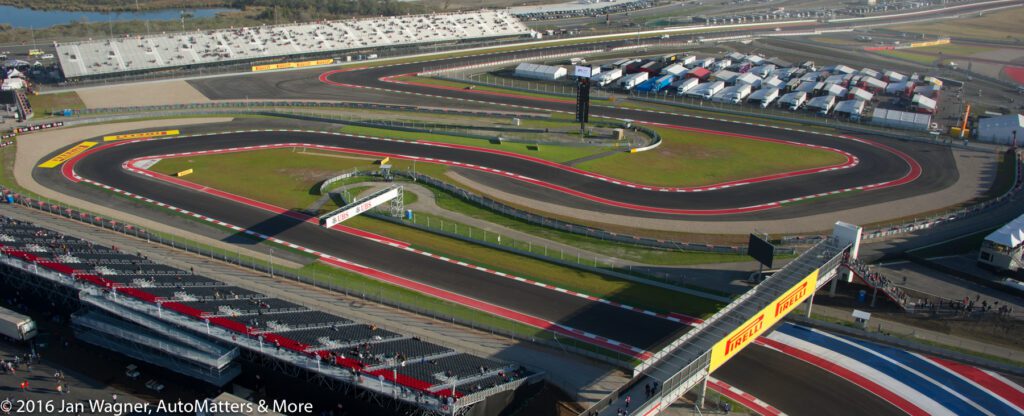
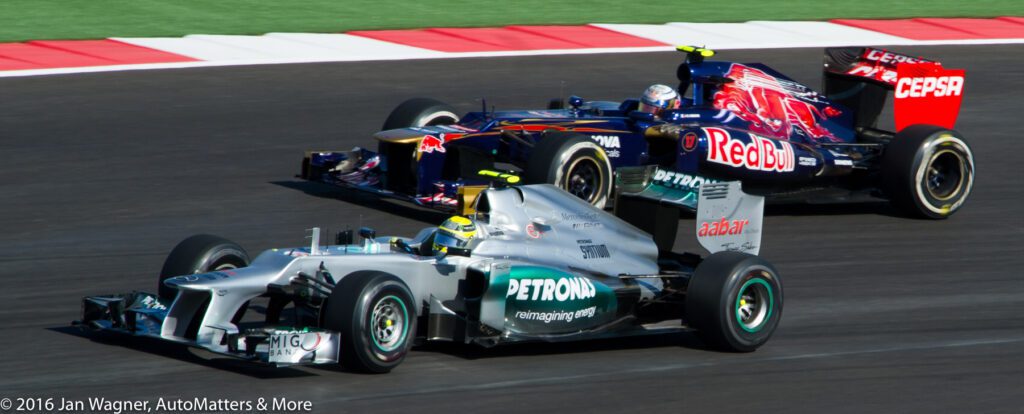
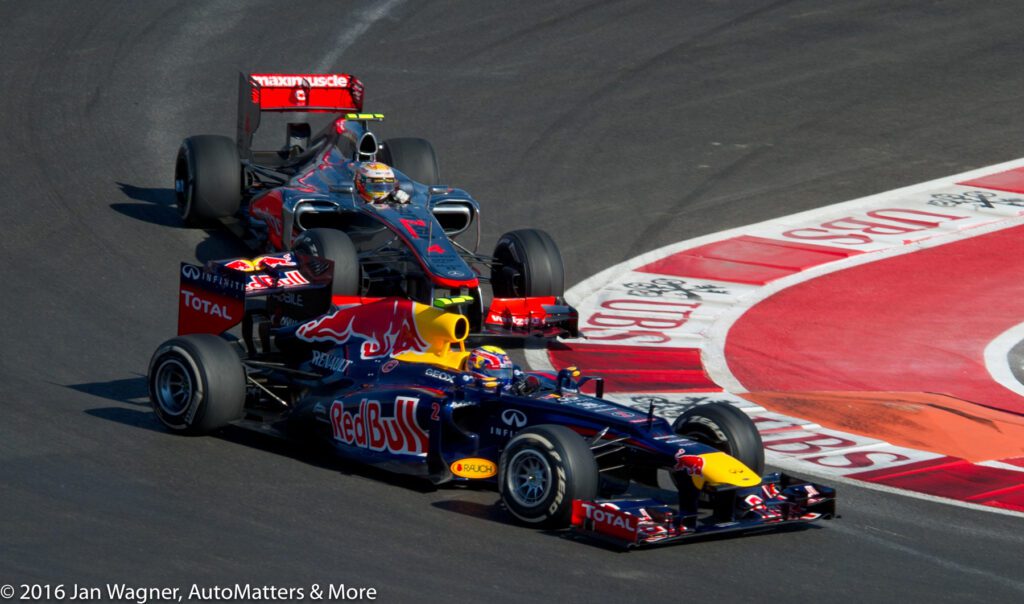
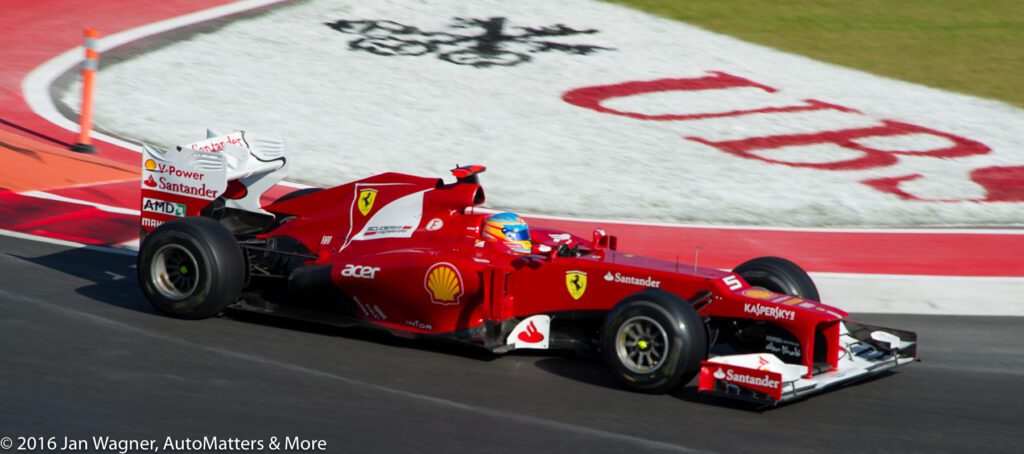
Most major motion picture studios’ movies about auto racing have disappointed me — some more so than others. Most have not come close to conveying what auto racing is really like.
A particularly cringe-worthy example of such a film, about stock car racing, was “Days of Thunder” (1990). At least “Talladega Nights: The Ballad of Ricky Bobby” was meant to be a comedic spoof of NASCAR stock car racing.
I get it. Movies are expensive and they need to make money. Widely distributed movies about auto racing must be entertaining, in order to provide a reasonable return on investment. They need to appeal to a broad audience, not just to the much more limited audiences of F1 purists. “F1® THE MOVIE” fulfills that necessary goal by combining a well-written, engaging story with believable acting performances.
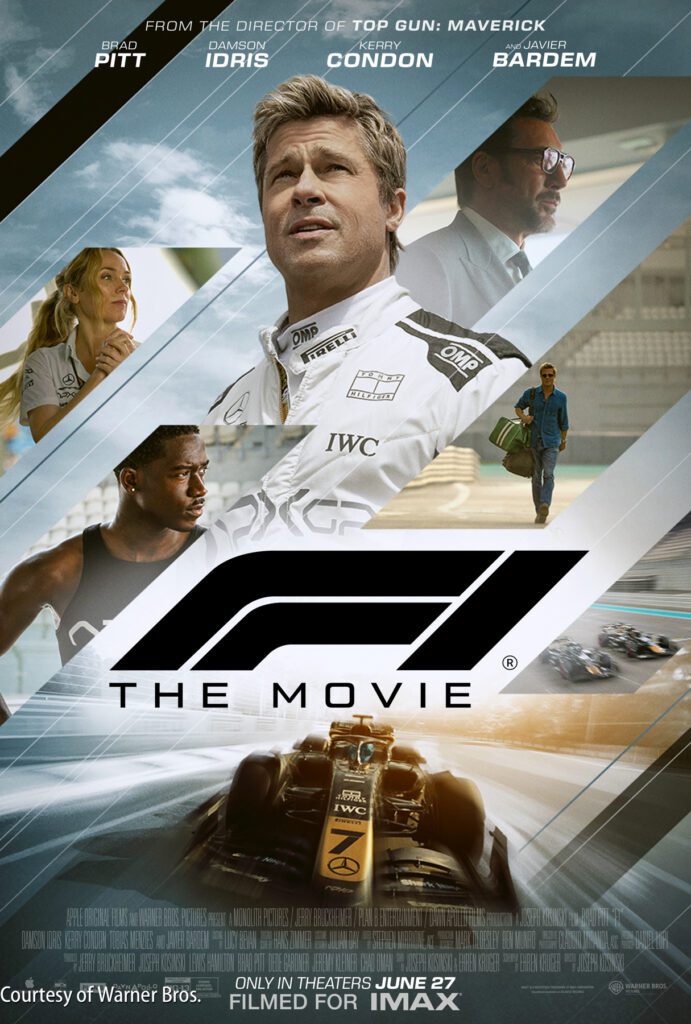
“F1® THE MOVIE” was shot on location at actual Formula 1 race tracks around the world, during actual F1 race weekends. The film enjoyed unprecedented access. Formula 1 racers participated on-camera, as did team principals, track workers and the rest of the people it takes to conduct Formula 1 races.
The story centers around the APXGP Formula 1 race team. We see the APXGP cars on actual race grids, making pit stops, and racing wheel-to-wheel with actual F1 competitors on actual race weekends.
One of the two drivers is Joshua Pearce (Damson Idris). He has serious skills as a racing driver, but he lacks experience and comes across as a know-it-all. His attitude gets him into trouble.
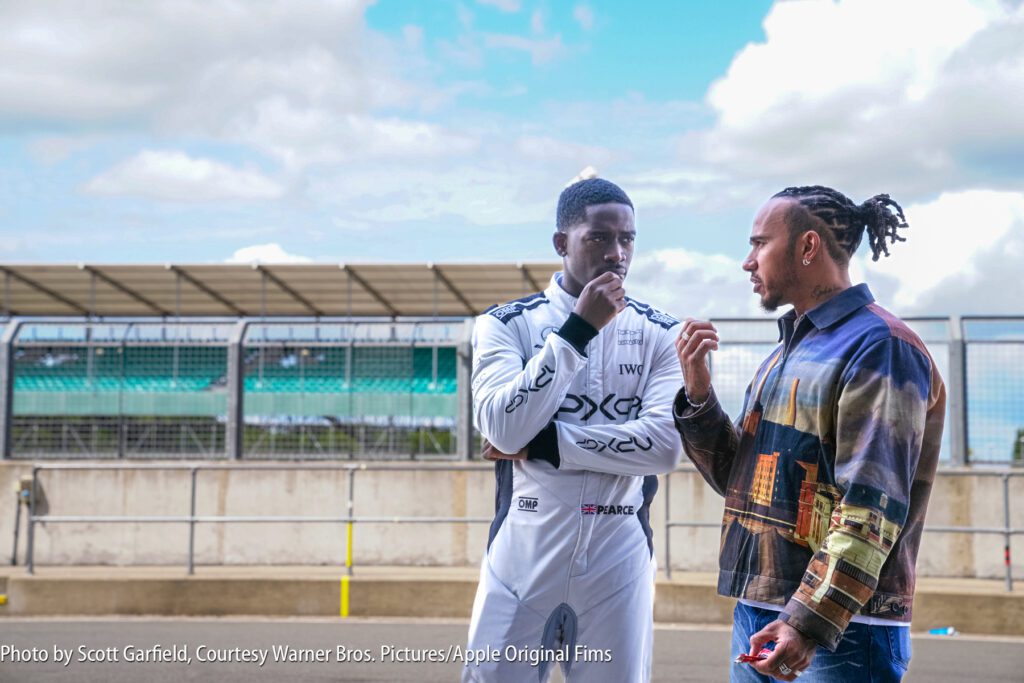
His new, much older, APXGP teammate is Sonny Hayes (Brad Pitt). He, too, also has great skills as a racing driver, but with the added benefit of decades of experience, in a variety of racing series. His sportscar racing at Daytona is awesome. However, success in F1 has eluded Sonny, all stemming from a serious F1 racing accident 30 years prior.
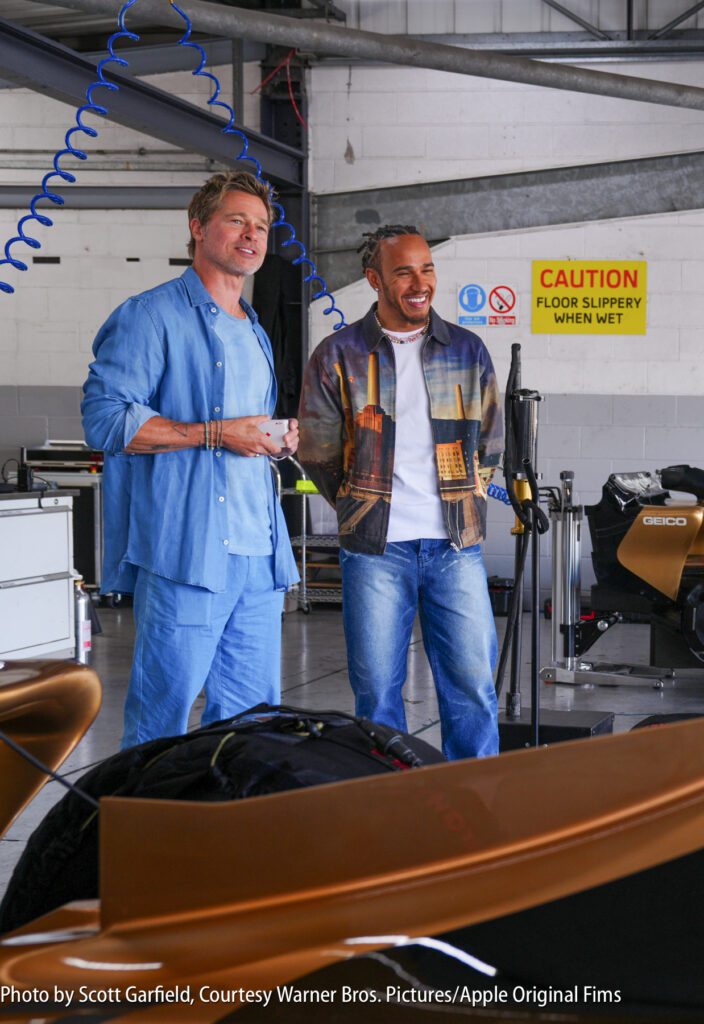
“F1® THE MOVIE” was filmed at actual racetracks, during F1 race weekends. The crowds, the spectacle that is the F1 “circus” and the racing action are rich with realistic details. The APXGP team’s technical equipment and on-track facilities are just like what actual Formula 1 race teams have and use. The team’s garage area is equipped just like a typical F1 team garage, as is the rest of their equipment, down to the smallest details. Development time is spent at an actual, high tech wind tunnel.
With so much attention to detail, one might wonder why actual Formula 1 cars were not used. The racecars of actual F1 teams are proprietary and unique. The nuances and fine points of each teams racecar technology are closely guarded secrets, and were not made available to the movie production. Instead, 12 APXGP racecars (six for driving and six for crashing) were modified F2 spec racecars, with significant modifications designed by Mercedes-AMG. Nearly as fast as F1 racecars, the F2 racecars were stretched. This and other modifications made them look and drive much like F1 racecars, while meeting the unique production needs of the movie.
In order to confidently, safely and progressively work their way up to driving these open-wheeled, high-speed racecars that use aerodynamics to enable them to stick to the track at 200mph, under extreme G-forces, Brad Pitt and Damson Idris were given rigorous physical training and training in driving skills. Advising “F1® THE MOVIE,” with film credit as a producer, was Lewis Hamilton, seven-time Formula 1 World Champion. He taught the actors fine points of driving an F1 racecar, including which gear to use and when, and where to brake for every turn of every racetrack.
Formula 1 racing is a team sport — a fact that is central to the plot of “F1® THE MOVIE.” We see that the success of APXGP depends upon everyone — including the drivers, crew members, engineers, managers and many others — working together towards a common goal. We see APXGP develop and implement strategies that include car setup, and which compounds of tires to use (soft, medium, hard, intermediate or full wet), when and by whom. These tire strategies are identified in the film as Plan A, Plan B and Plan C, and each plan produces race-determining implications.
This is not a documentary film about auto racing. It is a drama with an auto racing theme. To create a compelling dramatic story, “F1® THE MOVIE” took significant liberties with regards to what would and would not be tolerated in Formula 1.
The big screen, in-theater experience provides a breathtaking representation of the sights and sounds of Formula 1 racing: from the drivers lining up for the national anthems, the racecars screaming around the tracks, the crews making split-second pitstops, grandstands filled with cheering fans, the press asking questions, podium ceremonies sprayed with champagne and so much more.
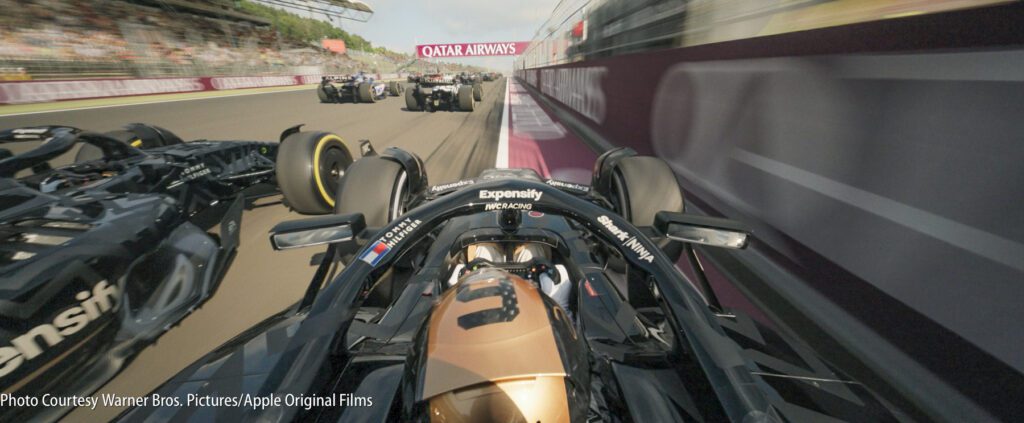
“F1® THE MOVIE” is a success on multiple levels. The story is compelling, the characters have depth and the on-track racing action is truly exciting — so much so that I enjoyed watching it as much the second time that I saw it as the first. It is filmed with IMAX cameras to great effect, so do try to see it in an IMAX theater. The visual clarity of even the most minute of details will make you feel like you are actually there in-person, watching the races.
“F1® THE MOVIE” will likely attract new fans to F1 racing, like Netflix has done with its ongoing documentary series “Formula 1: Drive to Survive.”
To see an official Warner Brothers trailer for “F1® THE MOVIE,” visit https://youtu.be/CT2_P2DZBR0?si=qomgLzU8iSlg71WF.
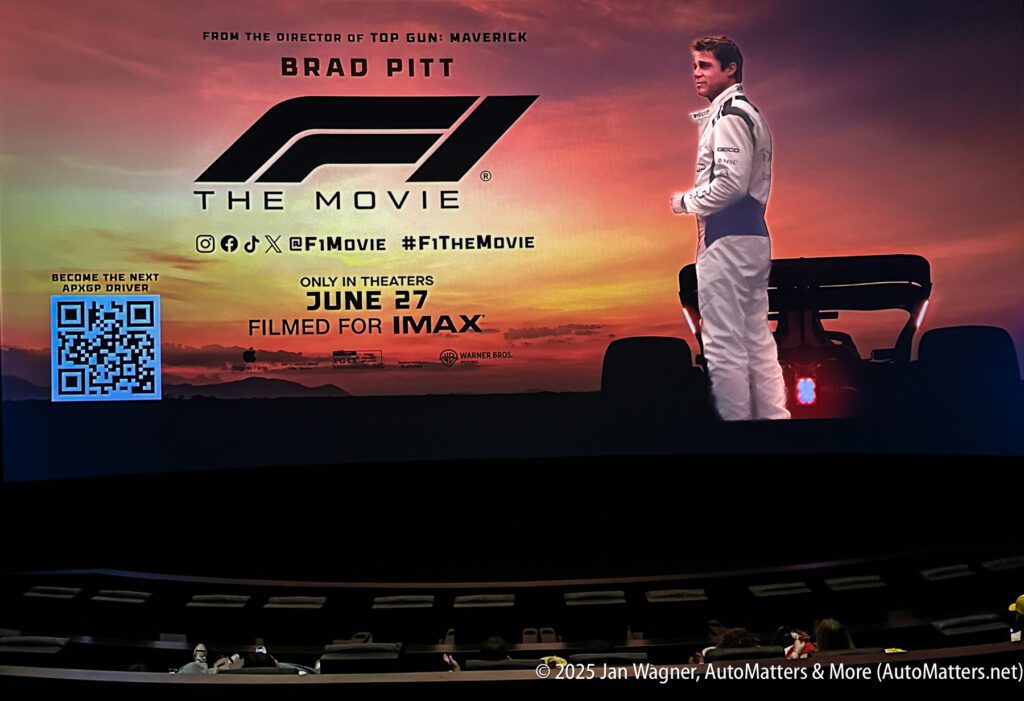
To explore a wide variety of content dating back to 2002, with the most photos and the latest text, visit “AutoMatters & More” at https://automatters.net. Search by title or topic in the Search Bar in the middle of the Home Page, or click on the blue ‘years’ boxes and browse.

technical, sound, color, angle of shots are excellent;
story as expected;
too many avoilable contacts, accidents. Not good for new or young fans;
actual teams and drivers good for real race fans.
somehow remind me of “Robby Gordon”
Thanks Albert,
I agree that there was certainly lots of avoidable contact. You and I both know that If a real Formula 1 team tried doing that, the stewards would shut them down. However, this is a movie that was made to entertain — not serve as a documentary. Team APXGP’s shenanigans were very entertaining.
Jan
Well Jan, my son and I did get to see F1-The Movie this evening. I must say it’s every bit as good as I expected, and more. You did a great job reviewing the film, so I’ll just add some observations.
As expected, the sound track was overpowering at IMAX, but since I use hearing aids, I was able to fool around with the volume and voice clarity setting on my iPhone. This only partially helped, because at any volume level the background noise overpowered the dialogue.
I was able to understand enough to follow the plot, which wasn’t too complicated, and which allowed the racing action to take the lead.
For me, the greatest accomplishment was how the producers/directors/set designers/actors blended the APXGP team into the real world of F1. Every detail of APXGP looked authentic.
Brad Pitt was an excellent choice for the lead, and the multitude of supporting actors held their own. The extended coverage of the final race of the season at Abu Dhabi was spectacular.
My son and I are visiting Halifax NS this summer. It has an IMAX, so who knows, we may see F1-THE MOVIE again. David.
David,
I’m glad that you and your son enjoyed this movie, as did I.
I agree completely with all of your observations. I saw another movie re entry and its dialog was not being overpowred by the background audio. I wonder why some movies are so loud.
Jan
Jan, great review and photos from COTA in 2012. I can’t remember who won, and the cars were considerably different 13 years ago.
I also watched the one and only IndyCar race at COTA some years later. It wasn’t very successful as the cars couldn’t make the sharp turns and had to use unofficial runoff areas. IndyCar never raced there again.
I’m holding off critiquing the F1 movie as my son and I plan to see it this week. David
Thanks David,
I, too, was struck by how different the F1 cars from 2012 look when compared to today’s F1 racecars. Perhaps the most obvious difference was the lack of the protective halo on the 2012 cars. While the halo certainly makes the cars safer for the drivers, it significantly reduces being able to see the drivers.
I hope that you enjoy the movie when you see it. I did — twice!
Jan
Thanks for always sending me email and link to all your newly published articles. Loved the review Jan.
Jaynald
You are very welcome. I’m glad that you enjoyed my review. This movie is well worth seeing. See it in an IMAX theater, if you can.
Jan